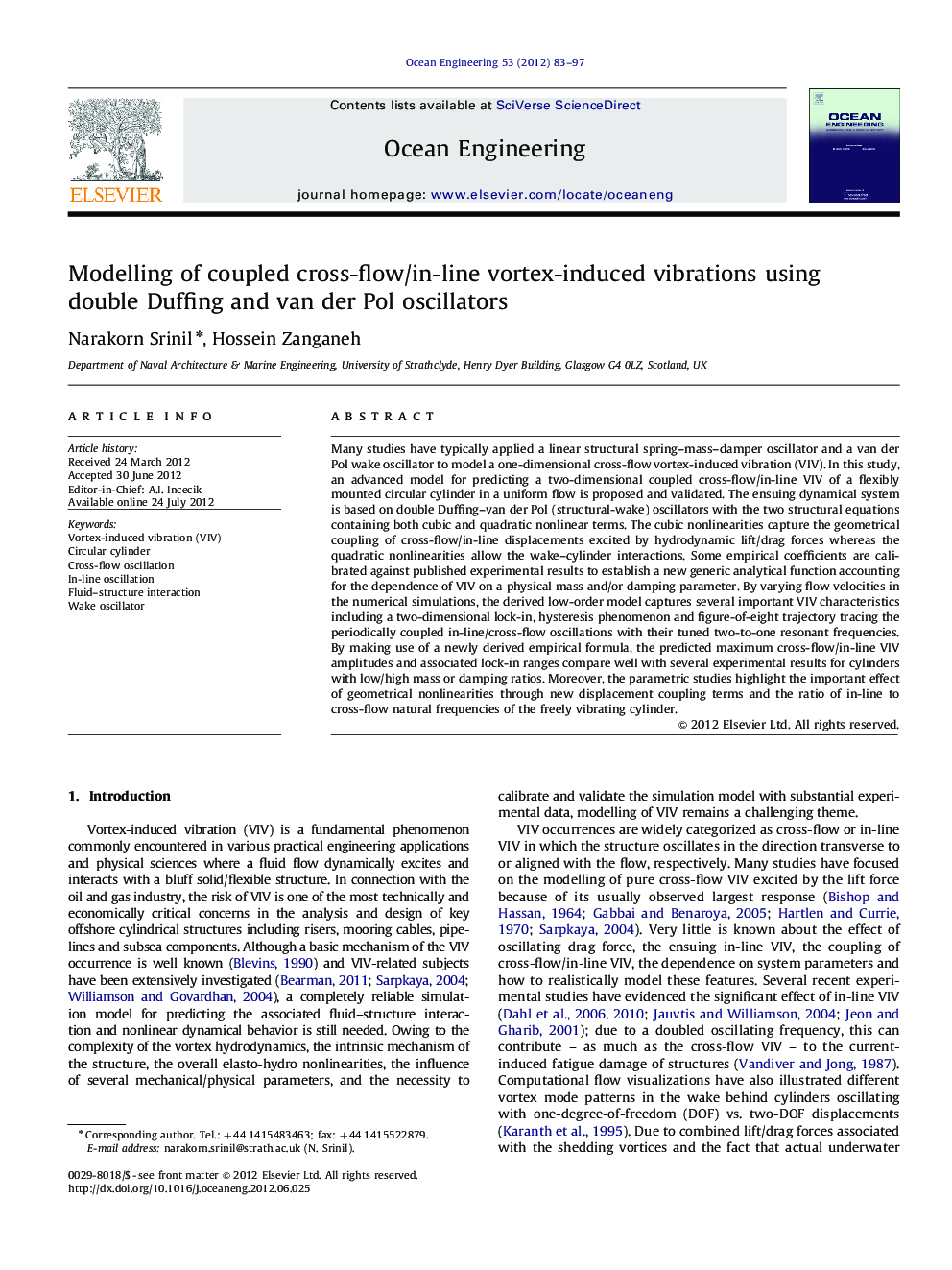| کد مقاله | کد نشریه | سال انتشار | مقاله انگلیسی | نسخه تمام متن |
|---|---|---|---|---|
| 1726122 | 1520737 | 2012 | 15 صفحه PDF | دانلود رایگان |

Many studies have typically applied a linear structural spring–mass–damper oscillator and a van der Pol wake oscillator to model a one-dimensional cross-flow vortex-induced vibration (VIV). In this study, an advanced model for predicting a two-dimensional coupled cross-flow/in-line VIV of a flexibly mounted circular cylinder in a uniform flow is proposed and validated. The ensuing dynamical system is based on double Duffing–van der Pol (structural-wake) oscillators with the two structural equations containing both cubic and quadratic nonlinear terms. The cubic nonlinearities capture the geometrical coupling of cross-flow/in-line displacements excited by hydrodynamic lift/drag forces whereas the quadratic nonlinearities allow the wake–cylinder interactions. Some empirical coefficients are calibrated against published experimental results to establish a new generic analytical function accounting for the dependence of VIV on a physical mass and/or damping parameter. By varying flow velocities in the numerical simulations, the derived low-order model captures several important VIV characteristics including a two-dimensional lock-in, hysteresis phenomenon and figure-of-eight trajectory tracing the periodically coupled in-line/cross-flow oscillations with their tuned two-to-one resonant frequencies. By making use of a newly derived empirical formula, the predicted maximum cross-flow/in-line VIV amplitudes and associated lock-in ranges compare well with several experimental results for cylinders with low/high mass or damping ratios. Moreover, the parametric studies highlight the important effect of geometrical nonlinearities through new displacement coupling terms and the ratio of in-line to cross-flow natural frequencies of the freely vibrating cylinder.
► An advanced model for predicting coupled cross-flow/in-line VIV of cylinders is presented.
► The model has been calibrated and validated for cylinders with different mass/damping ratios.
► The model captures important VIV characteristics such as hysteresis and figure of eight.
► Numerical and experimental results are in good qualitative and quantitative agreements.
► The effects of cylinder geometrical nonlinearities and natural frequency ratio are underlined.
Journal: Ocean Engineering - Volume 53, 15 October 2012, Pages 83–97